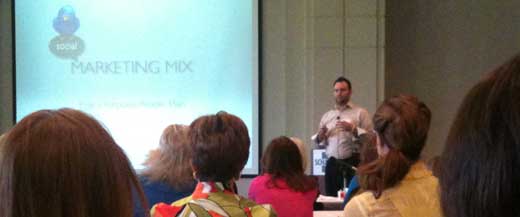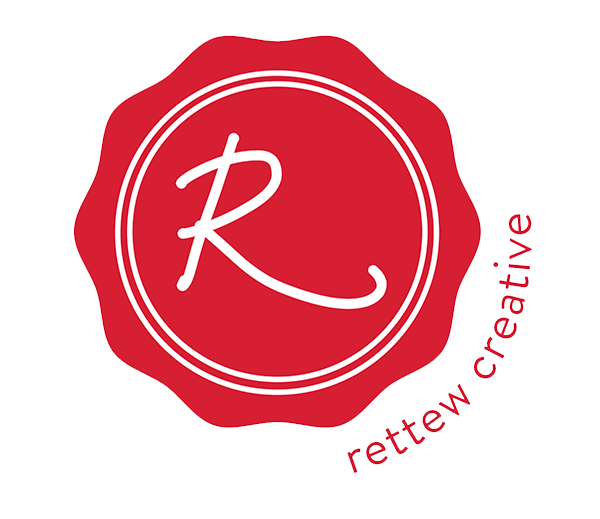
Reed Smith finished with this parting question,” Who Owns Social Media?” My opinion, the masses. The people that are using these media’s to socialize, share information, connecting with others are the ones that own social media. Organizations are just one of the many people in this vast paradigm interacting with other colleagues, constituency bases just like my mother sharing pictures of her Vegas trip. She has an audience, she engages with her audience, shares information, receives a level of response, and continues to engage in conversations. If people were not responding, commenting, engaging, sharing, and generating conversation…then Facebook would not be the Number One website jumping over Google (Via Ed Bennett)
We as marketers, hospitals, organizations should understand and respect the paradigm, or we will find one more way to shape a vastly growing medium into a form of one-way conversation…one more time! So, it comes back to audience…knowing our audience and finding ways to join the convesation instead of creating one more marketing stream, hoping that some mom from the age 25-34 is going to by into our poorly created message as we cram it into a medium with a sledge hammer. We have big sledge hammers!
Social Media is no longer an after thought when it comes to hospitals marketing strategies. VP’s and Marketing Directors are quickly trying to evaluate staff resources and figure out how to staff the shift. The shift is not just Social Media, but New Media and Rich Media. We are asking questions to those large organizations how they are staffing a marketing/pr and comparing it the numbers of the web/media staff. Some do not have a web/media staff, outsourcing to a vendor in the hopes it will create a band aid until the next fiscal conversation.
Ed Bennett told the crowd of 125 at SCHA’s Conference Center that his staff at the University of Maryland Medical Center is 8 web/new media professionals servicing all social media and web outlets compared to the marketing/pr staff has 8 members as well. They are making the shift and taking control of creation and distribution of the their message. Amen brother…preach it to us, we will follow. Trust me, every decision maker in that room was jotting down that number and thinking about integrating those stats into their strategic capital requests! Bottom-line, that is where the ROI discussion should be located.
Social Media efforts are now being integrated into every aspect of a hospital’s and physician’s marketing efforts. They are learning that Social Media has another ROI point of interest, it is generating direct hits to their web portals, directing audiences to the message, reducing bounce rates, and creating strategic linkage systems that bolster rankings in the search engines. It is a search engine war as hospitals in the same geographic areas are competing for the search engine space. Not only with Google but with YouTube…why, because YouTube is the Number 2 search engine right now, today! (Via Ed Bennett) Hospitals are creating rich media that gives audiences palatable information that helps potential clients make decisions from service lines to which ER (ED) to choose.
Social Media efforts are being integrated daily into all campaigns. It is no longer the game of just creating a billboard and “brochure” and then create a totally different message for web/social media/new media outlets. Now, these efforts are being combined, where there is a conversation of consistency in design across the whole board. You no longer see the Facebook and Twitter logo as an after thought at the bottom of a print piece, it is taking over as a major position in the design and including the exact URL to find this social media outlet. Oh yeah…we are in a mode of securing our domains before someone takes over our message. Look at what happened to BP, someone created a Twitter account (@BPGlobalPR) to post off color messages about the oil spill in the gulf. Is it really a pr nightmare?
And…OH…AND…TWITTER AND FACEBOOK ARE NOT THE ONLY SOCIAL MEDIA’s! Conversations are being created on Flickr and YouTube. People like to share pictures and video. They like to be creative and find others that share their vision. So campaigns are being created so that audiences can take part in the media creation. Organizations are creating campaigns allowing audience to submit videos and pictures that lead to idea generation and community building. We all have a way to express ourselves so why not capitalize on user generated media. Plus, marketing departments know they are biased based on strategic messaging (that waters down the social conversation), it makes more sense to let the audience lead the way. Once again, the masses own Social Media.
Policies and Procedures…oh yeah, that too. It is time to dust off that HR generated web policy that we have employees signed, the one that was created in the 1980’s. It is time to realize that we cannot close the pipes much longer inside hospitals and organizations. There is this new little nifty thing called a mobile device. Yes, those phones that are now media generators and media distributors. We can now walk around hospitals until we find that service bar on the phone, take a picture, and upload it to Facebook. Do not mind the fact that I cannot log onto Facebook from my company issued computer…we will show them. Do not mind that the hospital’s Wifi is in and out, we can get close to a window, get service, and send a picture of Uncle Harry that just got out of surgery and is ok now! Oh, there is this new thing called an iPad and a Netbook that does not need Wifi anymore and it has a the ability to do more than the mobile phone. So we need to generate a policy that is more than just a social media policy, it is Media Communication Policy for not only employees but patients as well. Signs need to be put up around hospitals to remind of best practices when taking pictures and sharing information.
IT IS A SOCIAL MEDIA REVOLUTION!
So where are we now and where are we going? Heck if I know, but I know this…location based technologies like FourSquare and Gowalla are hear and gaining traction. They are the real Social Media ROI generators, when people check into a location, it provides an exact location for all the masses to see. We now can start targeting information and strategies based on where the masses (or audiences) are checking in. We should, because Starbucks is doing it, providing incentives for those who check in the most…DISCOUNTS! Hmm, this could work well for hospitals that have wellness programs integrated with work-out facilities.
I tell you what, that Reed Smith and Ed Bennett are smart peeps…and Micheal Shetterly of Ogletree Deakins Law Firm got me thinking about this Social Media Revolution. It is about audience, purpose, delivery, engagement, and right to privacy. Yes, Right to Privacy…and what is your expectation to privacy. These new policies and procedures need to include how, when, and where information is created and distributed, especially if the company is footing the bill for that Balckberry, iPhone, or Android you are carrying. If they pay, they might have a right to access the information you generate on that device.
Social Media is here to stay and we cannot avoid it…AT ALL. So it is time to find ways to staff it, generate best practices, follow the audiences that own it, and be prepared for it’s evolution. This Social Media Revolution is going to evolve into the next media revolution that has the acceleration of an “E” ratio…forward and fast!
BTW – The Adams Group had two great recaps of Social Media Revolution: Part One & Part Two
